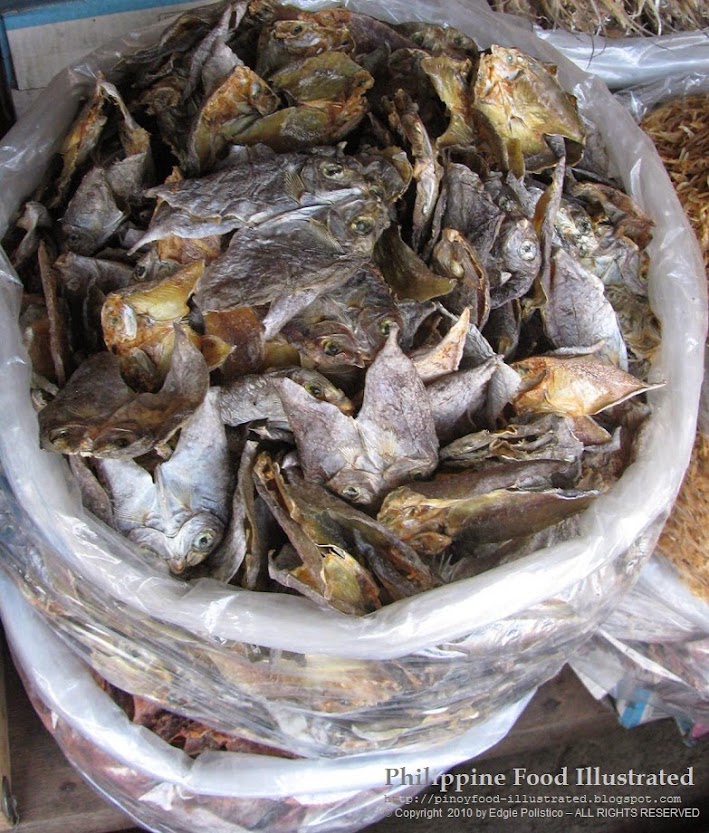Dried igat (sea eel) sold at the roadside stalls in Brgy. Damortis, Sto. Tomas, Pangasinan.
igat – /i-gat/ (Tagalog, Pampangueño (Capampangan), Pangasinense, Ilocano, Maranao, and Maguindanao sea fish) [n.] dried sea eel.
In Pangasinan, sea eel is made into tuyo (dried) traditionally by sun drying. The igat fish (sea eel) is cleaned of its gills, gutted, soaked in a brine solution, drained, then sundried.
When dry, it is cut into pieces (about 2 inches long) and is often sold in cutlet form. Dried igat is considered by Pangasinenses (local folks of Pangasinan) to be a "pampatigas ng tuhod" (potent knee jerker and aphrodisiac).
It can be fried, grilled, or used as sahog in vegetable dishes.
See also igat
Below, is a serving of fried dried igats with a dip of sukang Iloko with sliced fresh ripe tomatoes.
All photos by Edgie Polistico are copyrighted. ALL RIGHTS RESERVED.
If you liked this post, share it.
Let us know your opinion on the subject. Feel free to comment in the comment section, below. It is important for us to know what you think.
Tell us what other topics you would like us to write, share, and discuss.
For more about Filipino food, see this Philippine Food, Cooking, and Dining Dictionary. It is OPEN and FREE.
Continue to follow my blogs. You can also follow and learn more by joining us in our Facebook group. Have more bits and pieces about our kind of food, ingredients, and ways of cooking, dining, and knowing food culture across the 7,641 islands of the Philippines.
Encouragement and enthusiasm are not enough. I also need moral support, prayers, and anything else that can uplift my spirit and keep my good reasons. Keep them coming. All I know is that I am happy with what I am sharing and giving away. If you are pleased and happy with what I am doing, just smile and please share the happiness. Keep sharing and include to share the PHILIPPINE FOOD ILLUSTRATED. I feel energized when my blog becomes one of the reasons why you are happy and smiling.
Edgie Polistico

%2B-%2BDamortis%2C%2BSanto%2BTomas%2C%2BPangasinan%2B(3).jpg)
%252Bin%252BBinalonan%252C%252BPangasinan%252B(1).jpg&container=blogger&gadget=a&rewriteMime=image%2F*)
%252Bin%252BBinalonan%252C%252BPangasinan%252B(2).jpg&container=blogger&gadget=a&rewriteMime=image%2F*)

.jpg)






